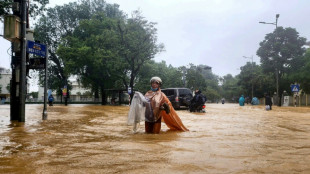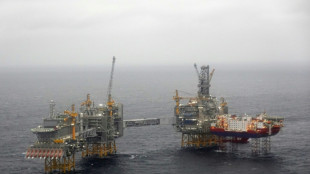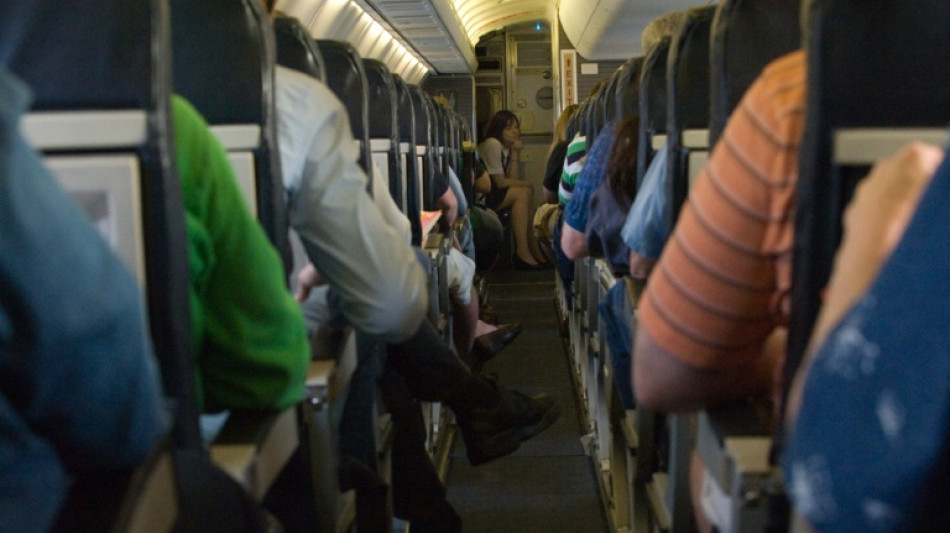
-
 Juve bounce back after Tudor sacking as Roma, Inter keep pace with leaders Napoli
Juve bounce back after Tudor sacking as Roma, Inter keep pace with leaders Napoli
-
Kane scores twice as Bayern set European wins record

-
 Radio Free Asia suspends operations after Trump cuts and shutdown
Radio Free Asia suspends operations after Trump cuts and shutdown
-
Meta shares sink as $16 bn US tax charge tanks profit

-
 Dollar rises after Fed chair says December rate cut not a given
Dollar rises after Fed chair says December rate cut not a given
-
Google parent Alphabet posts first $100 bn quarter as AI drives growth

-
 Rob Jetten: ex-athlete setting the pace in Dutch politics
Rob Jetten: ex-athlete setting the pace in Dutch politics
-
Juve bounce back after Tudor sacking as Roma keep pace with leaders Napoli

-
 Favorite Sovereignty scratched from Breeders' Cup Classic after fever
Favorite Sovereignty scratched from Breeders' Cup Classic after fever
-
Doue injured as PSG held at Lorient in Ligue 1

-
 Leverkusen win late in German Cup, Stuttgart progress
Leverkusen win late in German Cup, Stuttgart progress
-
Jihadist fuel blockade makes life a struggle in Mali's capital

-
 Uber plans San Francisco robotaxis in Waymo challenge
Uber plans San Francisco robotaxis in Waymo challenge
-
Paramilitary chief vows united Sudan as his forces are accused of mass killings

-
 Trump, Xi to meet seeking truce in damaging trade war
Trump, Xi to meet seeking truce in damaging trade war
-
Over 100 killed in Rio police crackdown on powerful narco gang

-
 Divided US Fed backs second quarter-point rate cut of 2025
Divided US Fed backs second quarter-point rate cut of 2025
-
'Amazing' feeling for Rees-Zammit on Wales return after NFL adventure

-
 'Cruel' police raids help, not hinder, Rio's criminal gangs: expert
'Cruel' police raids help, not hinder, Rio's criminal gangs: expert
-
S. African president eyes better US tariff deal 'soon'

-
 Sinner cruises in Paris Masters opener, Zverev keeps title defence alive
Sinner cruises in Paris Masters opener, Zverev keeps title defence alive
-
Winter Olympics - 100 days to go to 'unforgettable Games'

-
 Kiwi Plumtree to step down as Sharks head coach
Kiwi Plumtree to step down as Sharks head coach
-
France to charge Louvre heist suspects with theft and conspiracy

-
 US media mogul John Malone to step down as head of business empire
US media mogul John Malone to step down as head of business empire
-
'Never been this bad': Jamaica surveys ruins in hurricane's wake
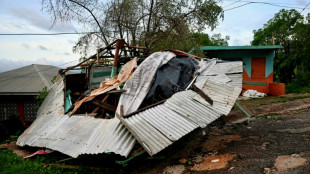
-
 France adopts consent-based rape law
France adopts consent-based rape law
-
Zverev survives scare to kickstart Paris Masters title defence

-
 Rabat to host 2026 African World Cup play-offs
Rabat to host 2026 African World Cup play-offs
-
Wolvaardt-inspired South Africa crush England to reach Women's World Cup final

-
 US says not withdrawing from Europe after troops cut
US says not withdrawing from Europe after troops cut
-
WHO urges Sudan ceasefire after alleged massacres in El-Fasher

-
 Under-fire UK govt deports migrant sex offender with £500
Under-fire UK govt deports migrant sex offender with £500
-
AI chip giant Nvidia becomes world's first $5 trillion company

-
 Arsenal depth fuels Saka's belief in Premier League title charge
Arsenal depth fuels Saka's belief in Premier League title charge
-
Startup Character.AI to ban direct chat for minors after teen suicide

-
 132 killed in massive Rio police crackdown on gang: public defender
132 killed in massive Rio police crackdown on gang: public defender
-
Pedri joins growing Barcelona sickbay

-
 Zambia and former Chelsea manager Grant part ways
Zambia and former Chelsea manager Grant part ways
-
Russia sends teen who performed anti-war songs back to jail

-
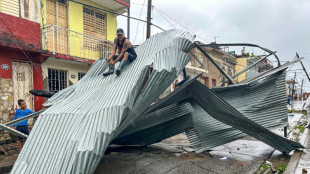 Caribbean reels from hurricane as homes, streets destroyed
Caribbean reels from hurricane as homes, streets destroyed
-
Boeing reports $5.4-bn loss on large hit from 777X aircraft delays
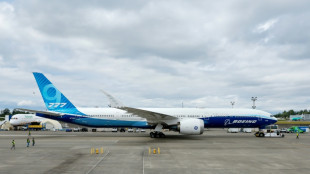
-
 Real Madrid's Vinicius says sorry for Clasico substitution huff
Real Madrid's Vinicius says sorry for Clasico substitution huff
-
Dutch vote in snap election seen as test for Europe's far-right
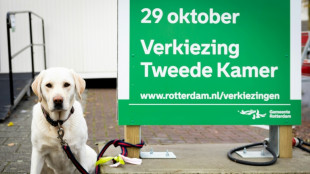
-
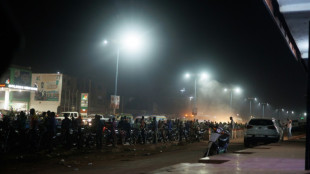 Jihadist fuel blockade makes daily life a struggle for Bamako residents
Jihadist fuel blockade makes daily life a struggle for Bamako residents
-
De Bruyne goes under the knife for hamstring injury

-
 Wolvaardt's 169 fires South Africa to 319-7 in World Cup semis
Wolvaardt's 169 fires South Africa to 319-7 in World Cup semis
-
EU seeks 'urgent solutions' with China over chipmaker Nexperia

-
 Paris prosecutor promises update in Louvre heist probe
Paris prosecutor promises update in Louvre heist probe
-
Funds for climate adaptation 'lifeline' far off track: UN
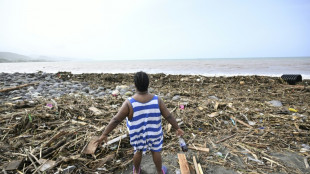

Bumpy skies: How climate change increases air turbulence
The seatbelt sign pings on, trays rattle, drinks slosh in their glasses.
For many flyers, air turbulence can be an unnerving experience -- and in a world warming under the effects of climate change, it is only set to worsen, according to a growing body of scientific evidence.
Here are the key things to know during another searing summer in 2025.
- Why turbulence matters -
Beyond making people uneasy, turbulence is also the leading cause of in-flight weather accidents, according to official data.
The numbers remain relatively small: there were 207 reported injuries on US commercial flights between 2009 and 2024. But high-profile incidents have thrust the issue into the spotlight.
These include an Air Europa flight last year, in which 40 passengers were hurt, and a Singapore Airlines flight where one elderly passenger died and dozens were injured.
"Typically injuries (are) to unbelted passengers or cabin crew rather than structural damage," John Abraham, a mechanical engineering professor at the University of St. Thomas told AFP.
"Modern aircraft withstand turbulence, so the main risk is occupant injury, not loss of the plane."
Still, planes must be inspected after "severe" encounters with turbulence -- about 1.5 times the normal force of Earth's gravity -- which occur some 5,000 times a year over the US, said Robert Sharman, a senior scientist emeritus at the National Center for Atmospheric Research.
Turbulence also increases fuel consumption when pilots must leave optimal altitudes, alter routes or change speeds, Abraham added.
- How climate change is making it worse -
Mohamed Foudad, an atmospheric scientist at the University of Reading in the UK, explained there are three main types of turbulence: convective, mountain wave and clear-air turbulence (CAT).
Convective turbulence is linked to rising or sinking air currents from clouds or thunderstorms that can be detected visually or by onboard radar, while mountain wave turbulence occurs over mountain ranges.
CAT, by contrast, is invisible -- and therefore the most dangerous.
It generally arises from jet streams: fast-moving westerly winds in the upper atmosphere at the same altitude as commercial jets, about 10–12 kilometers up.
With climate change, the tropics are warming faster at cruising altitude than higher latitudes.
That increases the temperature difference between the higher- and lower-latitudes, driving up jet stream velocity and wind shear -- volatile shifts in vertical air currents that trigger CAT.
Foudad and colleagues published a paper last year in the Journal of Geophysical Research: Atmospheres analyzing data from 1980 to 2021.
"We find a clear, positive trend -- an increase in turbulence frequency over many regions, including the North Atlantic, North America, East Asia, the Middle East and North Africa," he told AFP, with increases ranging from 60 to 155 percent.
Further analysis attributed the rising turbulence in certain regions to increased greenhouse gas emissions.
- What happens next? -
A 2023 paper led by Isabel Smith at the University of Reading found that for every degree Celsius of near-surface warming, winters would see an increase of about nine percent in moderate CAT in the North Atlantic, and summers a rise of 14 percent.
Winter has historically been the roughest season for turbulence, but warming is now amplifying CAT in summer and autumn, closing the gap.
Jet stream disruption is not the only concern: climate change is also fueling stronger storms.
"Climate change may also increase the frequency and severity of thunderstorms under future scenarios, and turbulence encounters near thunderstorms are a major component of turbulence accidents," Sharman told AFP.
In terms of mitigation strategies, Foudad is working on two studies: optimizing flight routes to avoid turbulence hotspots and improving forecasting accuracy.
Some airlines are moving towards strategies involving passengers wearing seatbelts more often, such as ending cabin service earlier.
Promising technologies are also being tested, says Sharman, including onboard LIDAR, which beams lasers into the atmosphere to detect subtle shifts in air density and wind speed.
Ultimately, cutting greenhouse gas emissions will be essential, Foudad added.
Aviation is responsible for about 3.5 percent of human-caused warming. Airlines are exploring cleaner fuels to help reduce the industry's footprint, though progress has been "disappointingly slow," according to the International Air Transport Association.
B.Khalifa--SF-PST

